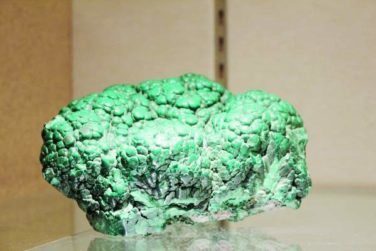FROM THE LANCET RESPIRATORY MEDICINE
Idiopathic pulmonary fibrosis (IPF) progressed at similar rates in patients who did and did not receive antacid therapy, based on a post hoc analysis of 52-week data from patients in three placebo-controlled trials.
“We found no association between antacid therapy and progression-free survival, mortality, or adverse events, reported Dr. Michael Krueter of the University of Heidelberg, Germany, and his colleagues ( Lancet Respir Med. 2016 Mar 31;S2213-2600[16]00067-9 ). Further, patients who took antacids and had less than 70% forced vital capacity (FVC) had higher rates of pulmonary and nonpulmonary infections than did patients who did not receive antacid therapy.
“Long-term double-blind randomized studies are urgently needed to further investigate the potential benefit (and possible harms) of antacid therapy in patients with different stages of IPF, especially those with advanced disease,” the researchers said.
The findings challenge the conditional recommendation for antacid use in the American Thoracic Society/European Respiratory Society/Japanese Respiratory Society/Latin American Thoracic Association guidelines on the treatment of IPF . That advice was based on previous retrospective studies that indicated antacid users had slower IPF progression, fewer acute exacerbations, and improved survival compared to patients who did not take antacids.
The new study looked at IPF patients in the placebo groups in three large, phase III trials of pirfenidone. In the placebo groups of those studies, 291 patients were receiving antacid therapy and 333 patients were not receiving antacid therapy at baseline. At 1 year, the rates of disease progression in the placebo group were not significantly different – 38% in the antacid users and 42% in those not using antacids. Disease progression was the composite endpoint of death, an absolute FVC decrease of at least 10%, and a decrease of 50 meters or more in the 6-minute walk distance (6MWD) . In both groups of patients, the rates of all-cause mortality were also similar.
The risk of death from IPF at 1 year also was not significantly different; 3.9% for antacid users and 5.2% for those not using antacids.
When patients were grouped on the basis of FVC at baseline – either less than 70% FVC or at least 70% FVC or greater – little or no difference was seen in disease mortality, disease progression, changes in FVC, 6MWD, and all-cause hospital admission between patients who received antacids and those who did not receive antacids at baseline.
Prior to stratification by baseline FVC, the rates of all-cause hospital admissions, gastrointestinal adverse effects, infections, and pulmonary infections were similar for the two groups of patients. At 52 weeks, however, infections and pulmonary infections were significantly higher in patients who received antacid therapy at baseline compared with those patients who did not receive antacids at baseline (74% vs. 62%; P = .0174 and 14% vs. 6%; P = .0214, respectively).
Unlike the patients in the previous retrospective studies, few patients in the placebo arms of the clinical trials had advanced IPF and low FVC, the researchers noted. All had IPF that had been diagnosed within 48 months of entering a trial, no evidence of improvement in disease severity in the year preceding trial entry, a predicted FVC of 50% or more, and a 6MWD of 150 meters or more. Among the patients receiving antacid therapy at baseline, 88% used proton-pump inhibitors, 8% used H2 blockers and 4% used proton-pump inhibitors and H2 blockers. Of the 291 patients receiving antacid therapy, 38 stopped after baseline; of the 333 not receiving antacid therapy, 83 started receiving the therapy after baseline.
Dr. Kreuter disclosed ties with Boehringer Ingelheim and InterMune/Roche. Two coauthors disclosed ties with F. Hoffmann-La Roche, which funded the study: Derek Weycker, Ph.D., reported receiving funding from the company, and Dr. Klaus-Uwe Kirchgaessler is an employee.





